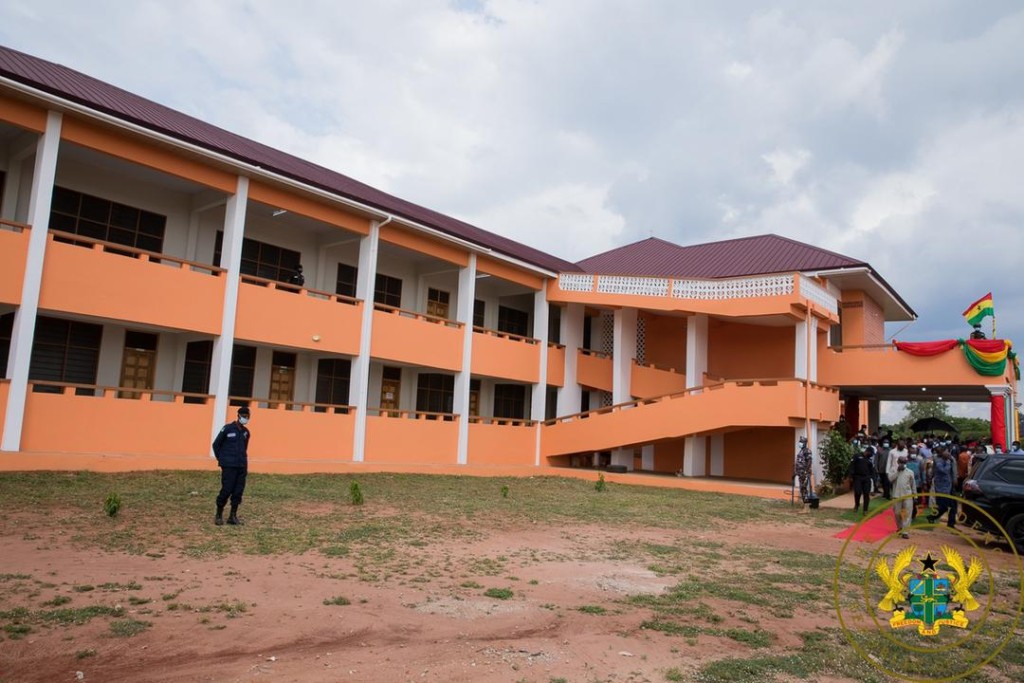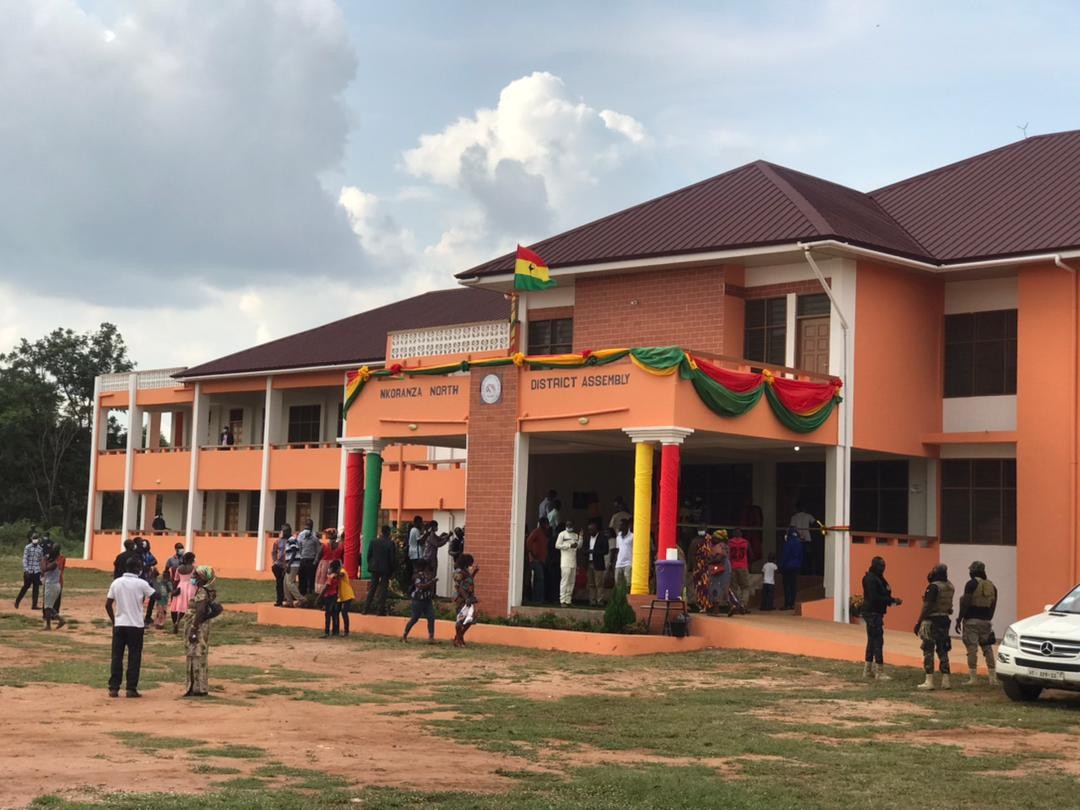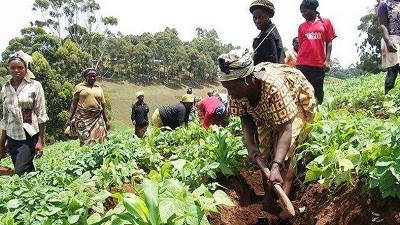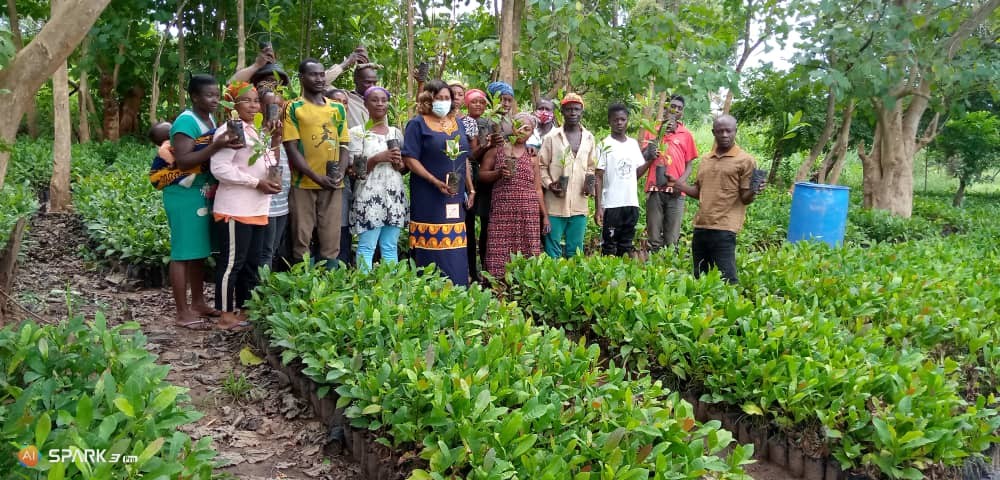Akatekyi Crocodile Pond: A Place...
September 29, 2025
The Nkoranza North District holds its position as one of eleven districts within the Bono East Region of Ghana. Originally, it constituted a part of the larger Nkoranza District, until a division occurred on 1 November 2007, creating the distinct Nkoranza North District. This division led to the renaming of the remaining portion as the Nkoranza South District, which was subsequently elevated to the status of a municipal district assembly on 28 June 2012, becoming the Nkoranza South Municipal District. Situated in the southern domain of the Bono East Region, the district assembly finds its administrative center in the town of Busunya.

In harmony with this notion, the National Development Planning Commission has issued comprehensive guidelines for shaping District Medium Term Development Plans. This intricate process encompasses data collection, analysis, interpretation, and the formulation of developmental propositions for the broader community.
Within this framework, the present chapter embarks on the exploration of the developmental profile of the Nkoranza North District. The central aim of this chapter revolves around an in-depth scrutiny of the collected data within the district. It further delves into the district's alignment with contemporary planning policies, evaluates the impact of these policies, and assesses their consequences on the socio-economic landscape of the local populace.
Physical and natural environment of the district
This subsection undertakes an evaluation of the geographical and natural attributes of the district, investigating their influence on its developmental trajectory. Physical and natural elements wield substantial influence over the societal fabric, shaping aspects such as dietary habits, cultural norms, and socio-economic dynamics. Thus, it becomes crucial to comprehend these factors and their interconnectedness with the district's development.

Geographical location and dimensions of the district
The Nkoranza North District stands as one of twenty-seven Administrative Districts encompassing the Bono East Region of Ghana, with Busunya serving as its administrative hub. Spanning a total land expanse of approximately 2,322 square kilometers, this district was carved out from the former Nkoranza District Assembly in 2008. Its geographical coordinates lie between longitudes 1o 10' and 1o 55' West, and latitudes 7o 20' and 7o 55' North. Boundaries of the district intersect with Kintampo South and Pru Districts to the North, Nkoranza South District to the South, Atebubu Amantin District to the East, and Techiman Municipal to the West. The district's estimated population size in 2013 reached 70,982, marked by a growth rate of 2.5%. An analysis of the district's population structure reveals a composition of 50.6% males and 49.4% females. Refer to Figures 2.1 and 2.2 for an illustration of the district's position within the regional context and an outline of its geographic boundaries, respectively.
Topography and waterways of the district
Predominantly characterized by low-lying terrain, the district gradually ascends from an elevation of 153 meters to 305 meters above sea level. Multiple streams and rivers intricately traverse the district, with noteworthy mentions including Tankor, Fanku, Fia, and Tanfi rivers. The Tankor River, in particular, experiences flooding during the rainy season, impacting communities like Asuofu and Tamale Akura. Most of these water bodies originate in the district's northeastern sector, flowing in both southern and northwest directions.

The district's groundwater potential demonstrates substantial variability, contingent upon rock formations and precipitation patterns. Currently, the absence of adequate water storage mechanisms during the wet season, coupled with intense run-offs, substantial evaporation rates, and insufficient infiltration rates for aquifer recharge, collectively contribute to water scarcity. This shortage hampers both human settlement and agricultural productivity.
Climate and flora of the district
The district's climate exhibits semi-equatorial characteristics, characterized by a dual peak rainfall pattern. The primary rainy season prevails between March and July, with a minor rainy phase occurring from September to November. Annual mean rainfall spans between 855mm and 1,500mm. Temperature readings consistently average around 26oC across the district throughout the year, with peak temperatures reaching 30.9oC and lows touching 21.2oC. The period from February to April records the highest temperatures, occasionally leading to occurrences of Celibro Spinal Meningitis (CSM).
The dry season ushers in the harmattan wind, characterized by its dry, cold, and dusty nature. This phenomenon contributes to the desiccation of vegetation, which, in turn, elevates the risk of bushfires. Humidity levels peak during the rainy season. Conversely, the months spanning December to February exhibit notably low humidity levels.

During the December to February timeframe, agricultural activities recede, as farmers diversify their engagements. This period facilitates community mobilization, and the subsequent drying up or reduction in size of numerous rivers demands extended efforts in water sourcing.
The Nkoranza North District straddles the transition between the savanna woodland prevalent in northern Ghana and the forest belt that envelops the southern region. This gives rise to a mosaic of savanna woodland and sporadic areas of regrowth, primarily evident in the district's eastern section. In contrast, the district's southern expanse is dominated by rejuvenated forest cover, characterized by shrubs and grasses, interspersed with remnants of original tree species, particularly the silk cotton trees.
The district's vegetation profile encompasses three principal categories: the guinea savanna, the transitional zone, and a forest reserve. The guinea savanna occupies the northern periphery of the district, accounting for approximately 43.37% of its total vegetation area. This category encompasses communities like Busunya, Bomini, Kranka, Yefri, and Manso, among others. The guinea savanna straddles the space between the forest reserve and the transitional zone.
Positioned at the southern extremity of the district, the transitional zone constitutes the most extensive vegetation domain, encompassing about 45.86% of the district's total land area. Contrarily, the forest reserve, constituting roughly 10.77% of the total land expanse, assumes the least portion of the district's vegetation cover. It envelops localities such as Fiema, Boabeng, Bomini, Senya, Bodom, and Konkronpe. Distinguished as the Monkeys sanctuary, this reserve stands out as a prominent tourist attraction within the district.
Characteristics of vegetation in Nkoranza North District
The guinea savanna predominantly features short grasses and shrubs susceptible to seasonal fires. It offers favorable conditions for cultivating crops like maize, millet, and yam, among others.
Characteristics of the transitional zone
This zone showcases a blend of grasses interwoven with trees, with tree heights averaging around 20 meters. Climbers are notably absent, while undergrowth displays remarkable density. The transitional zone provides a conducive environment for cultivating crops such as maize, cocoyam, cassava, cashew, citrus.

In the intricate weave of Ghana's rural-urban dynamics, the Nkoranza North District emerges as a microcosm of development challenges and potential. As the nation strives for equitable progress, the district's unique interplay of geography, climate, and natural resources provides valuable insights into the nuances of rural development. Effectively harnessing these insights, along with a steadfast commitment to comprehensive policies, will illuminate pathways toward a more prosperous and balanced future for Ghana's rural landscapes.
September 29, 2025
September 29, 2025
September 26, 2025
September 18, 2025
September 18, 2025
September 4, 2025
September 3, 2025
August 28, 2025
August 19, 2025
August 8, 2025